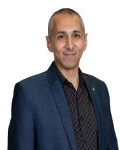


Inhomogeneous spatial patterns in diffusive predator-prey system with spatial memory and predator-taxis
Vol 1, Issue 1, 2023
Download PDF
Abstract
In this paper, by introducing predator-taxis into the diffusive predator-prey system with spatial memory, then we study the inhomogeneous spatial patterns of this system. Since in this system, the memory delay appears in the diffusion term, and the diffusion term is nonlinear, the classical normal form of Hopf bifurcation for the reaction-diffusion system with delay can’t be applied to this system. Thus, in this paper, we first derive an algorithm for calculating the normal form of Hopf bifurcation for this system. Then in order to illustrate the effectiveness of our newly developed algorithm, we consider the diffusive Holling-Tanner model with spatial memory and predator-taxis. The stability and Hopf bifurcation analysis of this model are investigated, and the direction and stability of Hopf bifurcation periodic solution are also studied by using our newly developed algorithm for calculating the normal form of Hopf bifurcation. At last, we carry out some numerical simulations to verify our theoretical analysis results, and two stable spatially inhomogeneous periodic solutions corresponding to the mode-1 and mode-2 Hopf bifurcations are found.
Keywords
References
- Crank J. The Mathematics of Diffusion, 2nd ed. Oxford University Press; 1980.
- Okubo A, Levin SA. Diffusion and Ecological Problems: Modern Perspectives, 2nd ed. Springer; 2001.
- Murray JD. Mathematical Biology II: Spatial Models and Biomedical Applications, 3rd ed. Springer; 2003.
- Lv Y. Turing-Hopf bifurcation in the predator-prey model with cross-diffusion considering two different prey behaviours’ transition. Nonlinear Dynamics 2022; 107(1): 1357–1381. doi: 10.1007/s11071-021-07058-y
- Rosenzweig ML, MacArthur RH. Graphical representation and stability conditions of predator-prey interactions. The American Naturalist 1963; 97(895): 209–223. doi: 10.1086/282272
- Du Y, Hsu SB. A diffusive predator-prey model in heterogeneous environment. Journal of Differential Equations 2004; 203(2): 331–364. doi: 10.1016/j.jde.2004.05.010
- Du Y, Shi J. A diffusive predator-prey model with a protection zone. Journal of Differential Equations 2006; 229(1): 63–91. doi: 10.1016/j.jde.2006.01.013
- Djilali S, Bentout S. Spatiotemporal patterns in a diffusive predator-prey model with prey social behavior. Acta Applicandae Mathematicae 2019; 169(1): 125–143. doi: 10.1007/s10440-019-00291-z
- Souna F, Lakmeche A, Djilali S. Spatiotemporal patterns in a diffusive predator-prey model with protection zone and predator harvesting. Chaos, Solitons and Fractals 2020; 140: 110180. doi: 10.1016/j.chaos.2020.110180
- Zhao M, Sun F. Bifurcationing analysis of predator-prey diffusive system based on Bazykin functional response. Journal of Applied Mathematics and Physics 2022; 10(12): 3836–3842. doi: 10.4236/jamp.2022.1012254
- Bajeux N, Ghosh B. Stability switching and hydra effect in a predator-prey metapopulation model. Biosystems 2020; 198: 104255. doi: 10.1016/j.biosystems.2020.104255
- Shi J, Wang C, Wang H, Yan X. Diffusive spatial movement with memory. Journal of Dynamics and Differential Equations 2020; 32(2): 979–1002.
- Shi J, Wang C, Wang H. Diffusive spatial movement with memory and maturation delays. Nonlinearity 2019; 32(9): 3188–3208. doi: 10.1088/1361-6544/ab1f2f
- Song Y, Peng Y, Zhang T. The spatially inhomogeneous Hopf bifurcation induced by memory delay in a memory-based diffusion system. Journal of Differential Equations 2021; 300: 597–624. doi: 10.1016/j.jde.2021.08.010
- Wang J, Wu S, Shi J. Pattern formation in diffusive predator-prey systems with predator-taxis and prey-taxis. Discrete and Continuous Dynamical Systems-B 2021; 26(3): 1273–1289. doi: 10.3934/dcdsb.2020162
- Zaret TM, Suffern JS. Vertical migration in zooplankton as a predator avoidance mechanism. Limnology and Oceanography 1976; 21(6): 804–813. doi: 10.4319/lo.1976.21.6.0804
- Kareiva P, Odell G. Swarms of predators exhibit “preytaxis” if individual predators use area- restricted search. The American Naturalist 1987; 130(2): 233–270. doi: 10.1086/284707
- Turner AM, Mittelbach GG. Predator avoidance and community structure: Interactions among piscivores, planktivores, and plankton. Ecology 1990; 71(6): 2241–2254. doi: 10.2307/1938636
- Chakraborty A, Singh M, Lucy D, Ridland P. Predator–prey model with prey-taxis and diffusion. Mathematical and Computer Modelling 2007; 46(3–4): 482–498. doi: 10.1016/j.mcm.2006.10.010
- Ainseba BE, Bendahmane M, Noussair A. A reaction-diffusion system modeling predator-prey with prey-taxis. Nonlinear Analysis: Real World Applications 2008; 9(5): 2086–2105. doi: 10.1016/j.nonrwa.2007.06.017
- Wu S, Shi J, Wu B. Global existence of solutions and uniform persistence of a diffusive predator-prey model with prey-taxis. Journal of Differential Equations 2016; 260(7): 5847–5874. doi: 10.1016/j.jde.2015.12.024
- Tyutyunov YV, Titova LI, Senina IN. Prey-taxis destabilizes homogeneous stationary state in spatial Gause-Kolmogorov-type model for predator-prey system. Ecological Complexity 2017; 31: 170–180. doi: 10.1016/j.ecocom.2017.07.001
- Wang J, Wang M. The diffusive Beddington-DeAngelis predator-prey model with nonlinear prey-taxis and free boundary. Mathematical Methods in the Applied Sciences 2018; 41(16): 6741–6762. doi: 10.1002/mma.5189
- Qiu H, Guo S, Li S. Stability and bifurcation in a predator-prey system with prey-taxis. International Journal of Bifurcation and Chaos 2020; 30(2): 2050022. doi: 10.1142/S0218127420500224
- Tello JI, Wrzosek D. Predator-prey model with diffusion and indirect prey-taxis. Mathematical Models and Methods in Applied Sciences 2016; 26(11): 2129–2162. doi: 10.1142/s0218202516400108
- Wang J, Wang M. The dynamics of a predator-prey model with diffusion and indirect prey-taxis. Journal of Dynamics and Differential Equations 2020; 32(3): 1291–1310.
- Wu S, Wang J, Shi J. Dynamics and pattern formation of a diffusive predator–prey model with predator-taxis. Mathematical Models and Methods in Applied Sciences 2018; 28(11): 2275–2312. doi: 10.1142/s0218202518400158
- Ahn I, Yoon C. Global solvability of prey-predator models with indirect predator-taxis. Zeitschrift für angewandte Mathematik und Physik 2021; 72(1): 1–20. doi: 10.1007/s00033-020-01461-y
- Faria T. Normal forms and Hopf bifurcation for partial differential equations with delays. Transactions of the American Mathematical Society 2000; 352(5): 2217–2238. doi: 10.1090/s0002-9947-00-02280-7
- Faria T, Magalha ̃es LT. Normal forms for retarded functional differential equations with parameters and applications to Hopf bifurcation. Journal of Differential Equations 1995; 122(2): 181–200. doi: 10.1006/jdeq.1995.1144
- Chow SN, Hale JK. Methods of Bifurcation Theory. Springer; 1982.
- Hsu SB, Hwang TW. Uniqueness of limit cycles for a predator-prey system of Holling and Leslie type. Canadian Applied Mathematics Quarterly 1998; 6(2): 91–117.
- Peng R, Wang M. Global stability of the equilibrium of a diffusive Holling-Tanner prey-predator model. Applied Mathematics Letters 2007; 20(6): 664–670. doi: 10.1016/j.aml.2006.08.020
- Chen S, Shi J. Global stability in a diffusive Holling-Tanner predator-prey model. Applied Mathematics Letters 2012; 25(3): 614–618. doi: 10.1016/j.aml.2011.09.070
- Li X, Jiang W, Shi J. Hopf bifurcation and Turing instability in the reaction-diffusion Holling-Tanner predator-prey model. IMA Journal of Applied Mathematics 2011; 78(2): 287–306. doi: 10.1093/imamat/hxr050
Supporting Agencies
Copyright (c) 2023 Yehu Lv
License URL: https://creativecommons.org/licenses/by/4.0/
Editor-in-Chief

Prof. Youssri Hassan Youssri
Cairo University, Egypt
Asia Pacific Academy of Science Pte. Ltd. (APACSCI) specializes in international journal publishing. APACSCI adopts the open access publishing model and provides an important communication bridge for academic groups whose interest fields include engineering, technology, medicine, computer, mathematics, agriculture and forestry, and environment.


.jpg)

.jpg)
